It’s Diablo crossed with The Binding of Isaac, and it’s very, very good!
Type: Single-player, Local MP
Genre: Action, Adventure, RPG
Developer: Dead Mage
Publisher: 11 bit studios
Release Date: 4 Sep, 2019


Introduction
Children of Morta is the new pixel-graphic action RPG from Dead Mage, developers of Shadow Blade, and published by 11-bit Studios.
The game’s setting is fairly traditional in the fantasy fiction sense: a beautiful, lush world is broken by some terrible cataclysm and its inhabitants do what they can to survive in the aftermath, only to be confronted by a second spreading evil that threatens to engulf the world. You play a member (actually, multiple members) of the Bergson family, who have vowed to protect the world from this Corruption.
Isaac, meet Diablo
The gameplay will be instantly familiar to anybody who’s played an action role-playing game with Rogue-like elements, though really, after further consideration, I think the only strong Rogue-like element is the procedural generation.
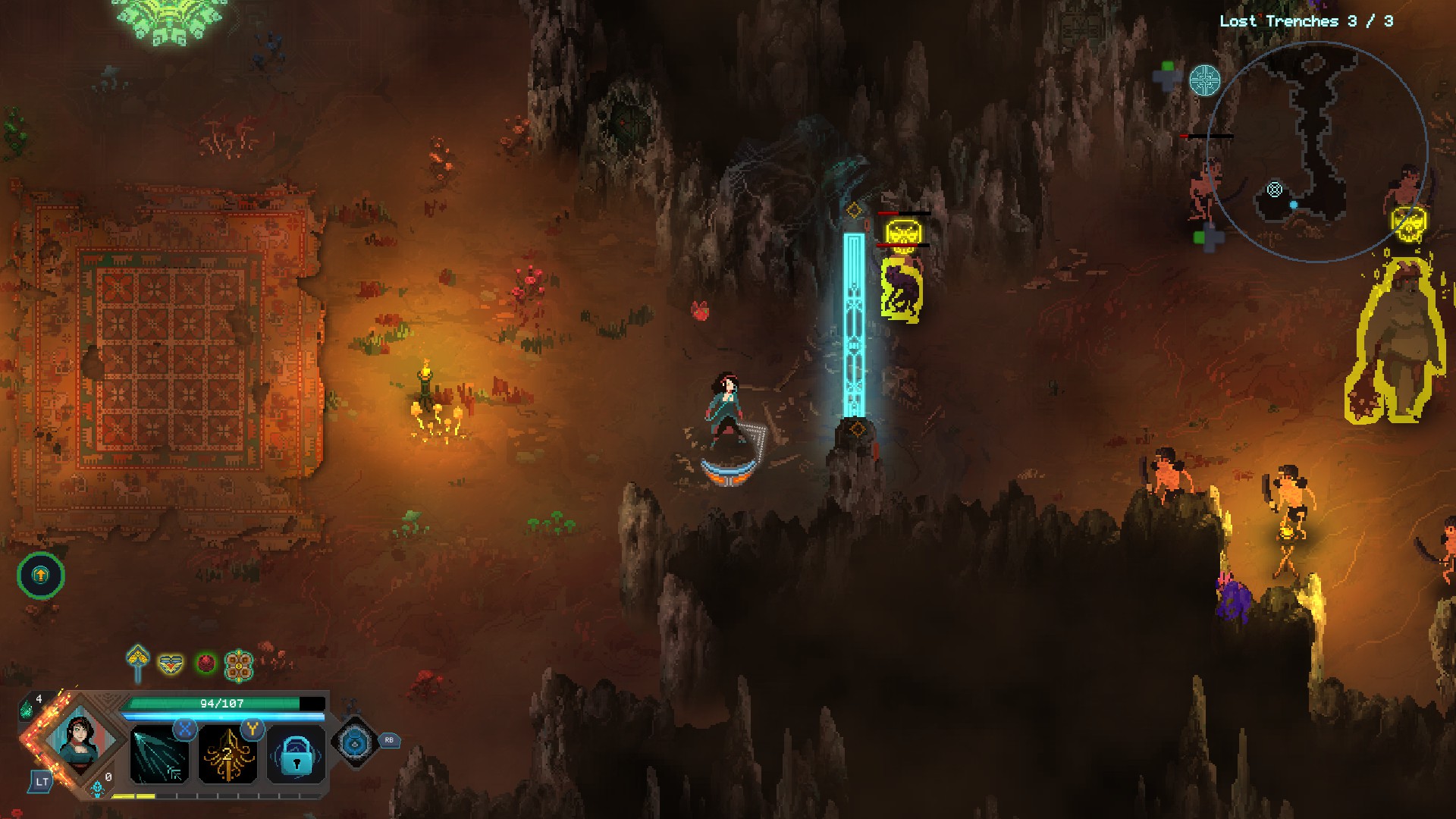
At first glance it looks and feels a lot like a sort-of pixel-graphic game in the Diablo franchise. You have a home base from which you venture out into procedurally generated open-plan levels, divided into multiple stages, each one presided over by a boss. Die and you return to base, none the worse for wear. Unlike Diablo, though, there’s no loot or gear, and character development is restricted to spending a single skill point per level on a fairly restrictive skill tree; you don’t even have an inventory!
Instead, each character has a basic attack and can be affected by a vast range of buffs, from simple stat increases, to damage shields, to orbiting things that hit or blast your opponents, much like the randomly selected buffs you find in The Binding of Isaac. I have no idea how many of these things there are, either; I’ve played for something like 10 hours so far, reaching the first of three spirit guardians in the game, and I must have found something like 30 buffs spread across the different types: runes, charms, shards, etc.
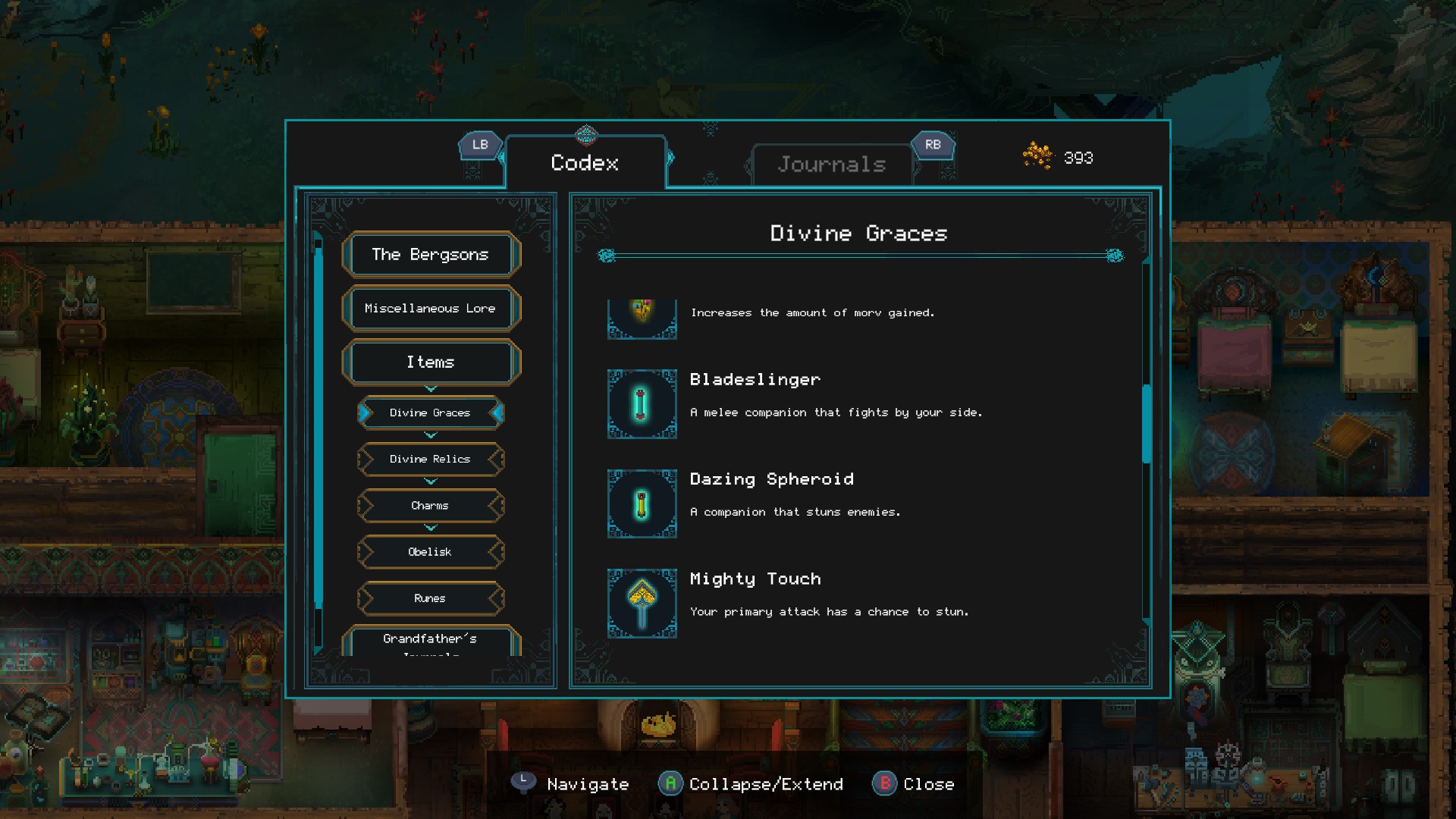
Perma-death is not a part of Children of Morta. Instead if you die you lose any buffs you’d collected, but retain collected currency — which can be spent on upgrades for the whole family — as well as any skill points you earned. It works very well and makes sure that there’s always a feeling of progression, even when you have to go back and replay levels over and over again; your characters are always getting stronger.
There are six (I think) different characters to choose from and you can swap and change between them at home base as you desire. Only two are unlocked to begin: John, the father in the family — basically a tank with sword and shield; and Linda, the eldest daughter — a terror with a bow and unlimited arrows. Others unlock as you progress, either by reaching certain points in the game, encountering certain rooms or items, or simply returning home enough until they appear.
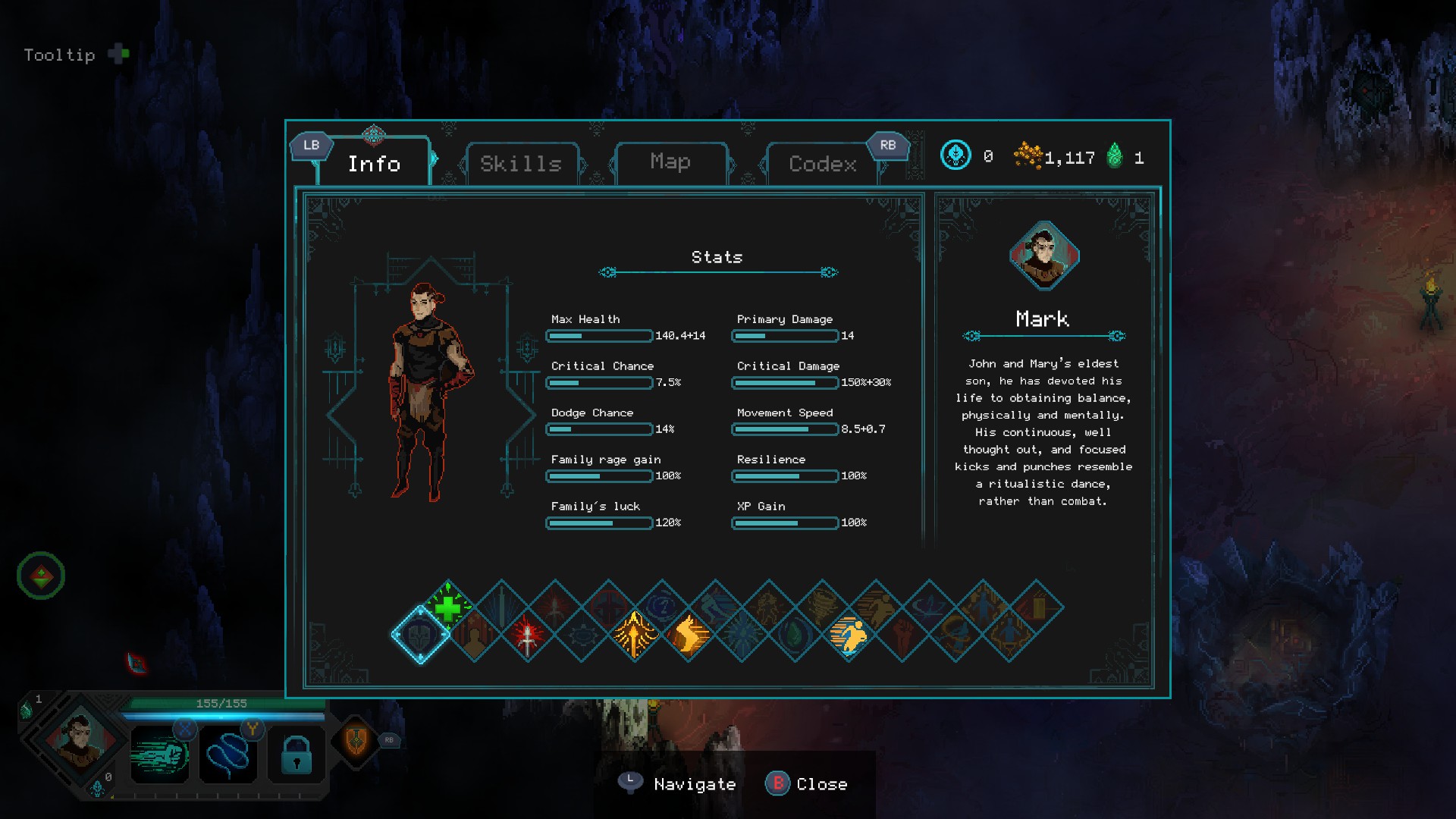
Each open-plan level is divided into sections by doors that only you can open, allowing you to fully clear out an area before progressing to the next (though I believe the Corruption can spawn certain types even after clearing). Some levels include unique rooms that appear behind blue barriers, many of which retain that Isaac feeling, as they trap you inside and don’t let you out until you’ve defeated any monsters that spawn inside. These provide a wonderful break from the otherwise quite repetitive (but great fun!) hack-and-slash and seem to be fairly numerous, though I’ve seen some repeated often.
Every three levels seems to house a boss creature that will most likely kill you the first few times you encounter it, with the final boss for a stage (nine levels, at least in the first area) being a guardian of the spirit whom you need to reach in order to get to Mount Morta and defeat the Corruption. But after you’ve killed each boss you’ll be taken back home, and the way will be opened for all characters to resume the battle there. You only need to replay levels for which you haven’t defeated the boss, though you can always return to earlier levels if you want to.
Who cares about narrative?
Honestly, if you’ve read any fantasy fiction you’ve heard the backstory before. That’s not to say that it’s dull or boring, though. Yes, it’s definitely derivative, but the story really does add something wonderful to the game.
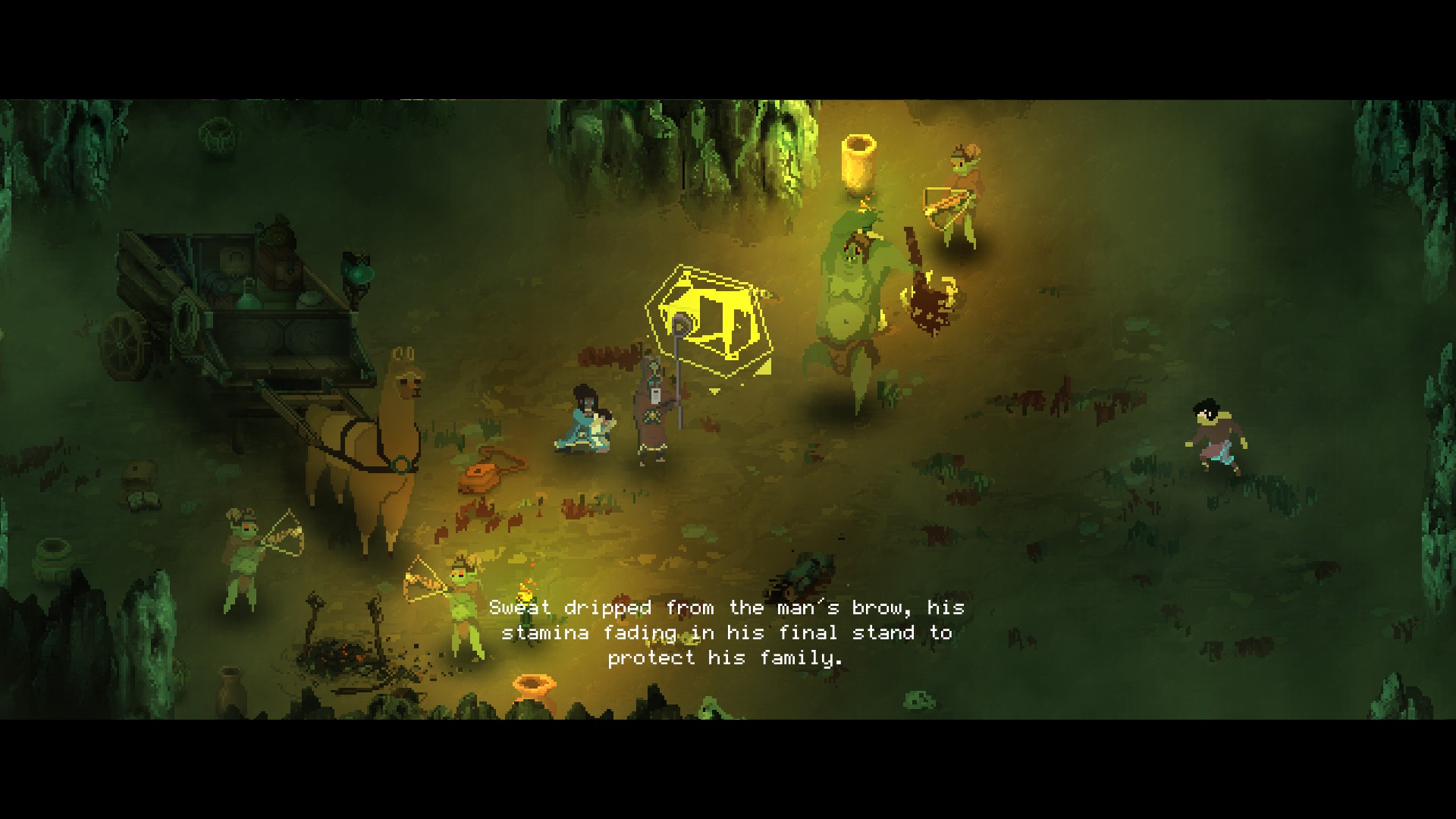
The narrator’s voice — the only voice acting in Children of Morta — is nearly perfect. The speaker does a wonderful job eliciting emotion; he helped to make me really care what happens to the characters. I shed a tear when Mary’s animal friends were slain, and rejoiced when Ryker — the wolf cub — made it safely to the Bergson’s home, and again when they healed him. The unique scenes that the Bergsons encounter, both in the dungeons and back at home, and the short narratives that accompany them, play a beautiful counterpoint to the endless slaughter of faceless evil monsters, giving the player something more to look forward to than the continual gameplay progression.
I found it amusing, too, that the protagonists all have such normal names. It’s unusual to read a fantasy story in which John, Mark, Ben, and Kevin are the heroes. Whatever happened to Alcazar, Melxor, and Kellan!? I think the developers have chosen such normal names deliberately, making the characters seem more like a normal family.
The script is very well written, too, for the most part. Unfortunately for me, at least, this makes the occasional grammatical error — and one of my pet peeves: the singular “they” or “them”, particularly when the sex of the person is known — all the more grating. To hear the excellent narrator reproduce the errors in speech is somehow even worse, though I suspect the vast majority of players won’t notice, or won’t care. But really, such complaints are only minor in the grand scheme of the game and the story it tells, and you shouldn’t let a grumpy old grammar-fiend dissuade you at all in that regard.
Chunky, Chunky Pixels
The whole game is rendered in a chunky pixel-graphic art style, which it’s probably fair to say has been a little overused in indie games in the past few years. It’s also fair to say, however, that Children of Morta looks absolutely beautiful! The artists have done an amazing job.
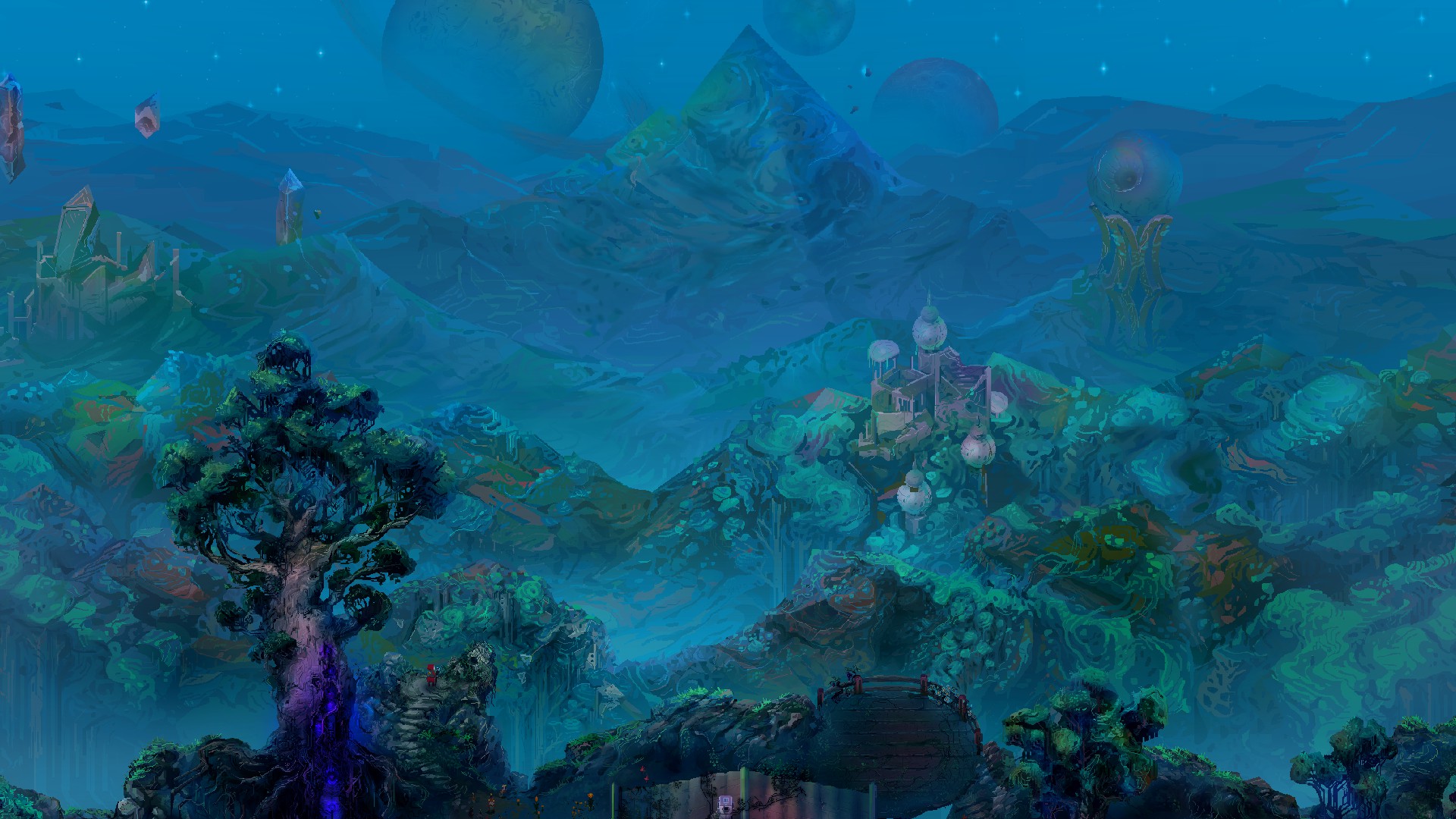
The overland parts of the game, such as the Bergson’s house and the tutorial mission, are bright and colourful and look simply fantastic, making the incursion of darkness from the Corruption feeling all the more unwelcome. Dungeon graphics are good, too, but considerably less impressive for the most part; there’s only so much that can be done with procedurally generated cave walls and floors, for example.
Characters are very well animated, but I find myself wishing for just a bit more resolution about their faces, as the number of pixels used isn’t sufficient to portray their feelings in facial expressions. It’s only a minor gripe, though, and is always a problem with this art style. Overall, the game looks much better than I expected it would, particularly when it’s moving; attention to detail, especially in the Bergson home, is astounding, and there’s always something new to see amongst the many animated bits and pieces.
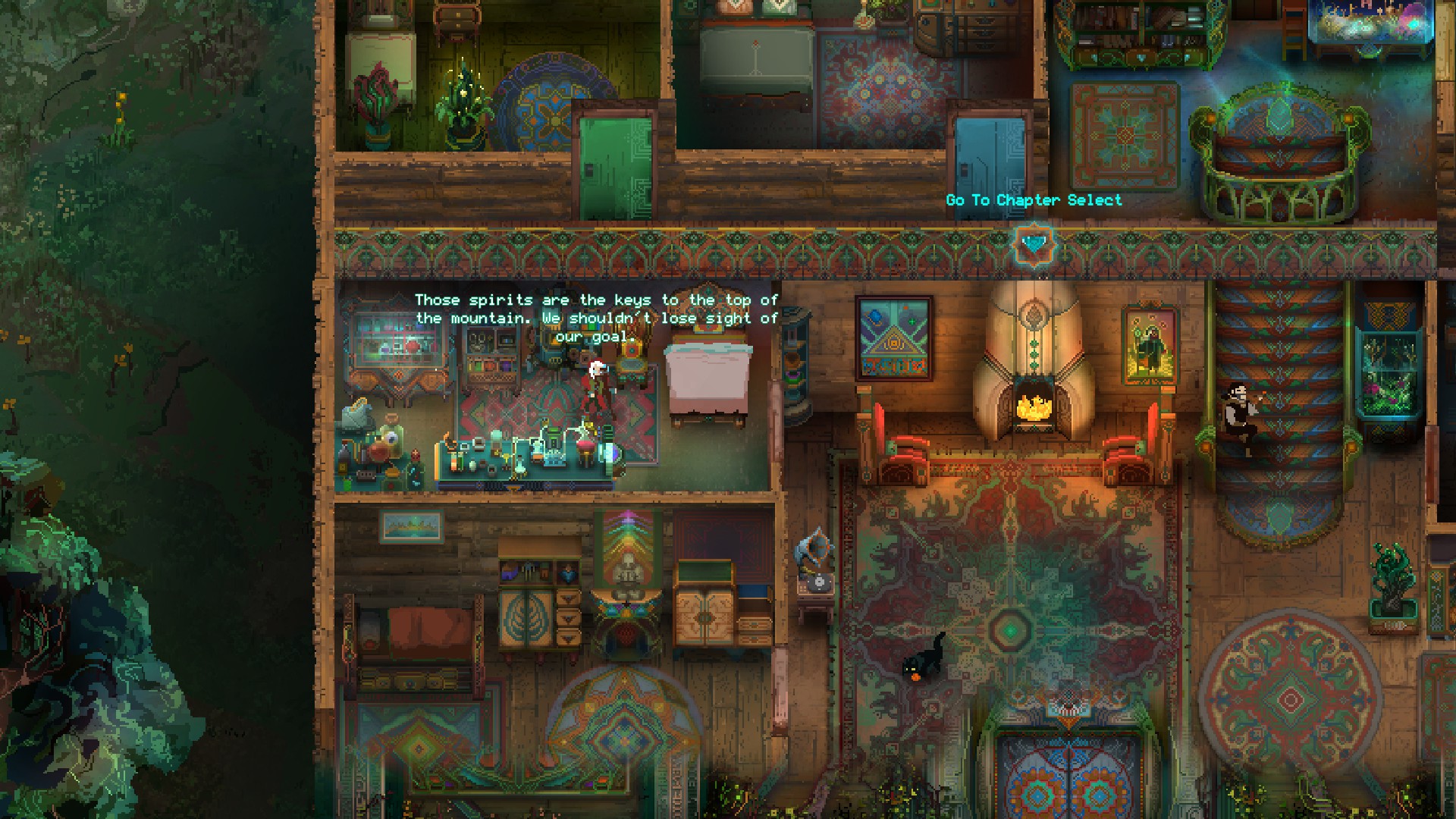
There are basically no graphics options — resolution and a welcome vsync setting are about it — but performance is great almost all the time on my three-year-old gaming laptop. I have hit a few places with short pauses, and one instance where the game froze for about 15-20 seconds upon picking up a certain buff at the same time as taking a Steam screenshot — but it came back of its own accord and it only happened once.
Music and Sound
I’ve already mentioned the excellent narrator, but I’m going to mention him again anyway: he’s brilliant.
The musical score is also very, very good, full of lovely instrumental fantasy-classical style tracks that range from light trilling melodies to “Oh my God, I’m going to die!” dramatic pieces. It is wonderfully produced and fits the game and its setting to a tee.
Sound effects are great, too, though footsteps can seem rather loud at times — perhaps deliberately, to increase the feeling of isolation? The clay-pot-breaking sound seems very Diablo-esque, and did leave me wondering why there are so many urns in these dungeons (and how they’ve remained intact with all these monsters wandering about). Monster and action/attack sounds are distinct, allowing players to quickly recognise their least favourite enemies — and take action against them.
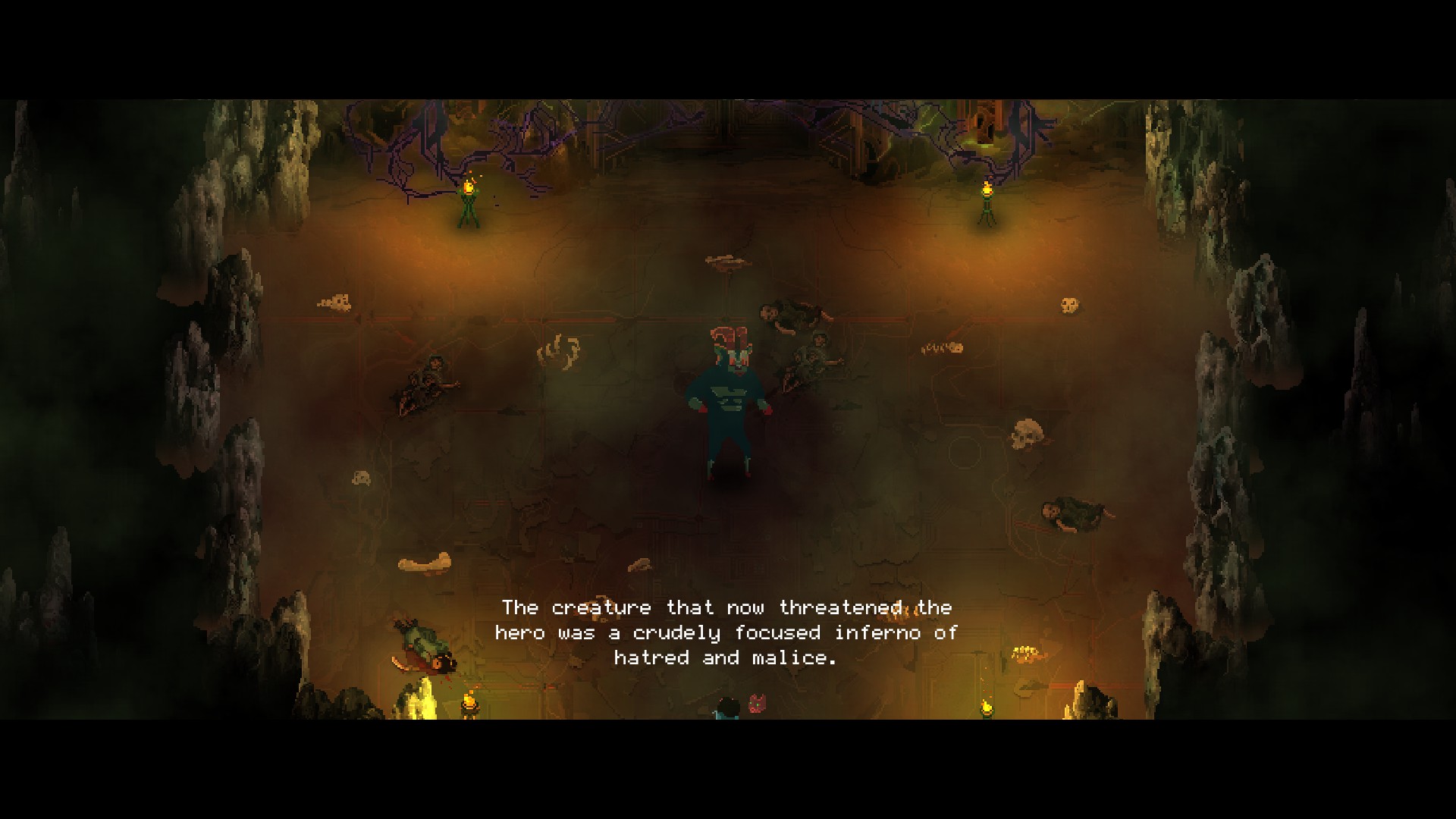
I’ve encountered one audio bug, or perhaps an overactive feature: the narrator is occasionally be cut-off mid speech in the mid-dungeon special rooms when another sound effect is played at the same time. It’s not a serious issue, but is a little jarring when it happens.
Controlling the Bergsons
Children of Morta supports mouse and keyboard controls and also has full controller support. I’ve tried both and I’d heartily recommend the controller, but if you don’t have one then the mouse and keyboard are certainly workable. The developers have definitely considered playability in the default controller mapping. While the X button is used for primary attack in the direction the character is moving, the right stick can be used instead to attack in any direction, exactly like a twin-stick shooter. Particularly for Linda this works extremely well. I actually don’t know if controls are reconfigurable — the defaults were so good I didn’t even try to remap them.
I have had a little difficulty with the controls in some situations. Sometimes the Y button (secondary attack) doesn’t seem to work if I use it while moving, and the LT rage button also seems to need me to stop moving to work reliably. Also, I’ve found that movement sometimes stops working if I keep holding the left stick while performing another action that stops the character, requiring me to let go of the stick and then move again. This can be frustrating in the heat of battle, but I’ve become used to it after realising what was going on. It would be better if the game reapplied the direction without requiring the stick to be centred first, though. Oh, and it seems that once you’ve started the game your chosen controller option is permanent; there’s no way to swap between keyboard and mouse and controller without dropping back to the desktop and restarting the game.
The interface is clean and minimal, with little always-on button/key indicators in the corners of interface elements reminding you how to activate them, such as the little X in the top left of the primary attack, with Y for secondary, etc. Picking up buffs briefly tells you its effects, before reducing the information down to just the icon for that effect. Holding right on the directional pad brings up a tooltip overlay that shows you the full information again. It works really well. The only thing that seems to be missing to me is the type of buff; since you can only have one of most types, it would be good to know what type each one is before buying another of that type in the in-dungeon shop.
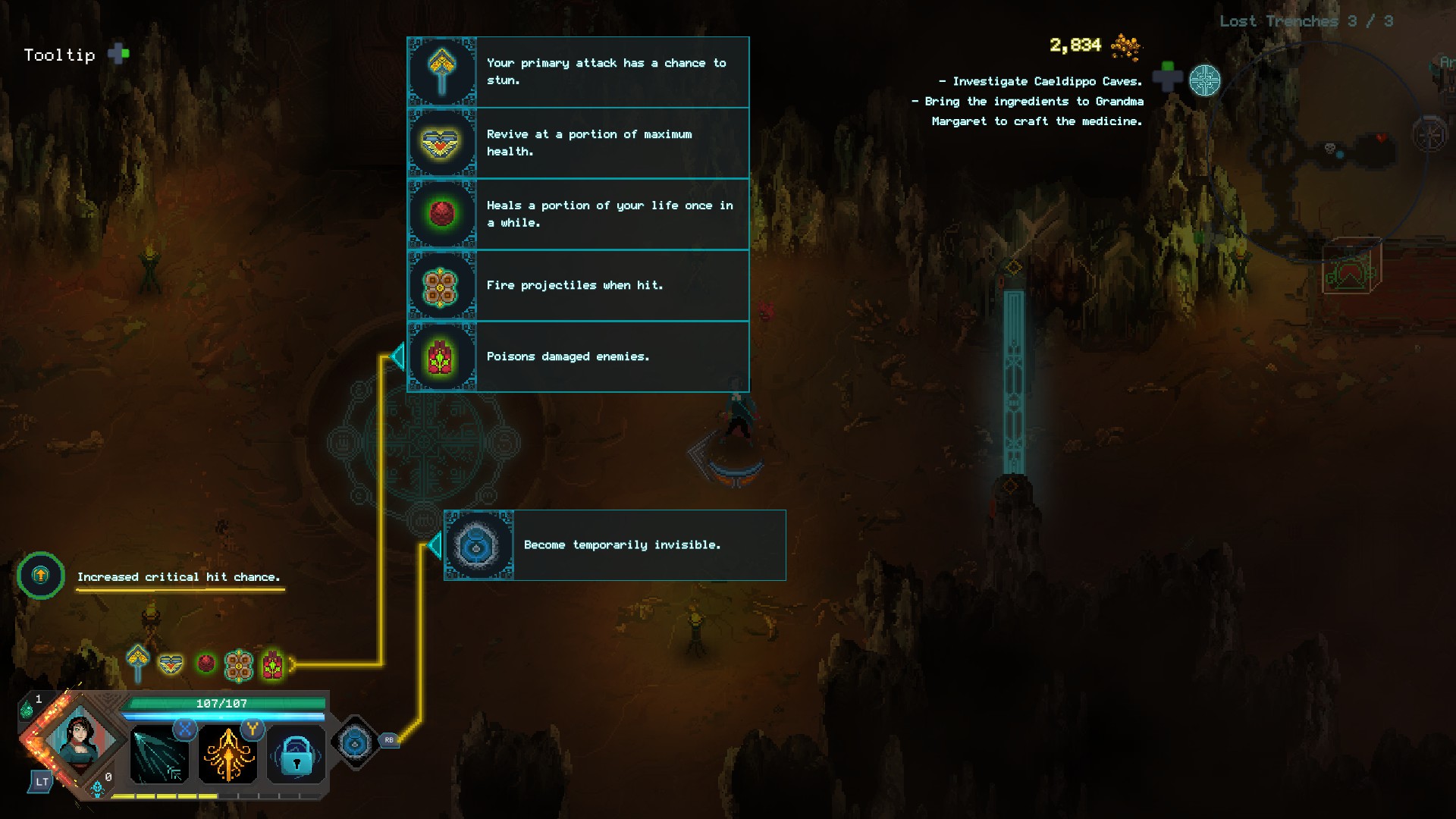
There’s a minimap and a much larger map (accessible from the same tabbed window as character sheet, skills, etc), which shows most of what you want to be able to find on each level, but for some reason some items you discover aren’t shown. It would be great if it showed the locations of items such as runes that you’ve left behind, in the same way it does for health potions. Like most of my other complaints, though, this is really a very minor one. A slightly more important issue is that there seems to be no mid-level save feature; you either complete a dungeon entirely in a single sitting or you abort and go back home. I always find these sorts of design decisions annoying, since large blocks of free time are quite rare for me, and I hate leaving the PC running because of a lack of a save feature.
The game includes one little gameplay gem that really should become standard for the genre. Once you’ve found the exit for the level you can leave it alone and wander back to clear out the rest of the level before you leave, as you’d expect. But to reduce the amount of backtracking you have to do to return to the exit, you can just hold a directional button and your Bergson will teleport straight back to the exit. Hooray!
Finally, Children of Morta also includes a local co-op multiplayer mode. I haven’t had a chance to play this, but it sounds cool!
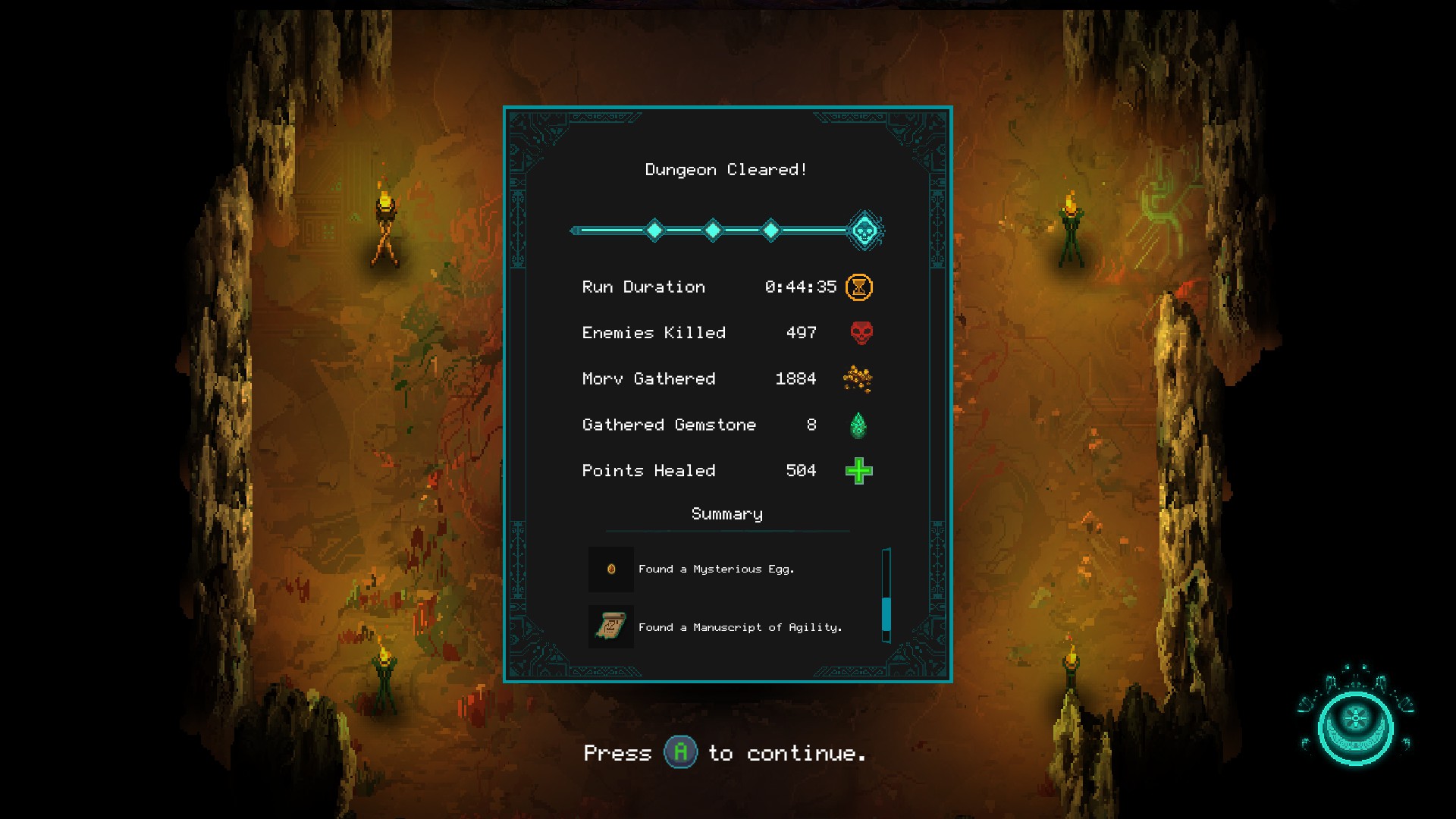
Verdict
I’ve had Children of Morta on my Steam wishlist for a long time and honestly I was expecting to be kind-of disappointed when I finally played it. I’m so glad to be wrong!
Some questionable grammar and a few minor issues aside, this is the simply the best game I’ve played in a while. Everything fits together so well, and the developers have worked that “just one more” addictive feedback loop into the game perfectly. Somebody’s going to have to pull out something wonderful in the next three months or there’s a good chance this will be my game of the year.
I really have to stop writing now. The Bergsons need my help!

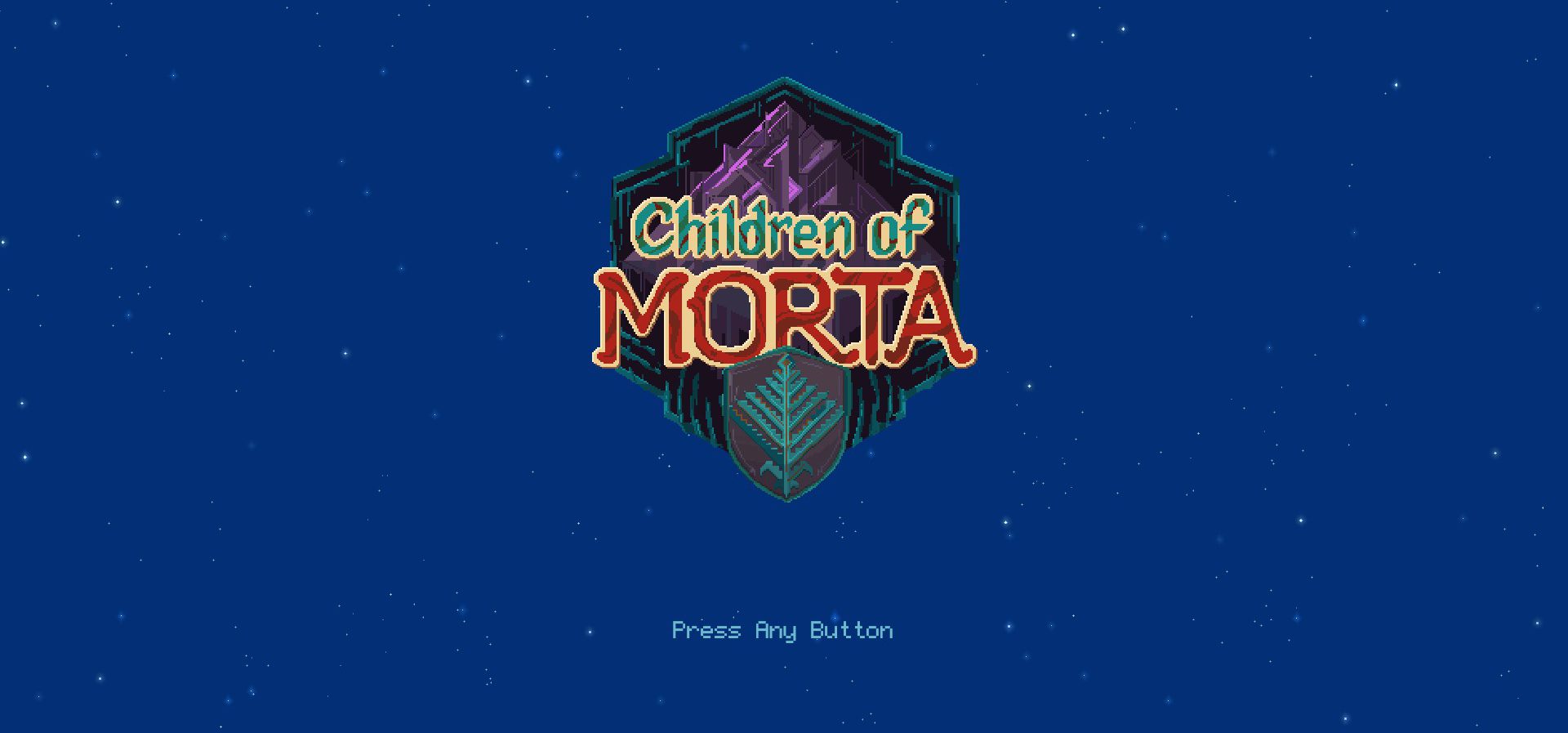









https://en.wikipedia.org/wiki/Singular_they